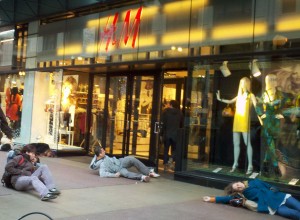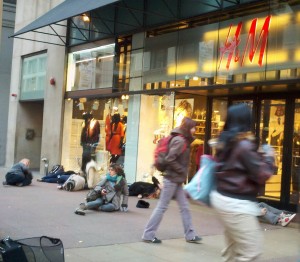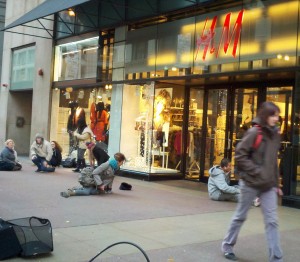
Over the course of two days in April 2011, 800 women laborers at two apparel factories in Cambodia lost consciousness. Over the next year, around 2200 more, in large groups, at different factories all around the country, followed. Government, reporters—even the big-name brands that buy the clothes, particularly H&M, the world’s second largest clothing manufacturer—investigated. Malnutrition, insecticides, factory ventilation infractions, overwork, a particularly nasty strain of cold from Canada, female hysteria, and spiritual possession were all considered, but no single cause was discovered for the mass fainting incidents that continued to plague the industry.
In truth, reports are inconsistent and unreliable, but the mass fainting incidents did come shortly on the heels of the largest cohesive labor action in the history of the nation, which ultimately failed under crushing violence and repression. The garment industry in Cambodia is the nation’s third largest, but pay workers receive also supports a fifth of the country working rice fields in the provinces, and therefore the nation’s second largest industry as well. Workers currently earn $61 per month, and were agitating for an increase closer to the living wage of $93 per month. The precarious economic situation means workers frequently go without food. Even before the mass fainting incidents, workers lost consciousness on the factory floor on an average of between one and five times per week, per factory.
But the mass faintings were different, and seem to come out of frustration and a previous lack of consideration for organized demands. Thus it is helpful to think of them as an extremely well organized but remarkably autonomous refusal of work. Also notable is that the fashion industry—H&M in particular—has, during the same period of time that the mass faintings have been taking place, shifted clothing production from a seasonal schedule to one that changes in entirety ever few weeks. On the ground, this has meant workers producing around six times as much clothing now as they did a year previous.

On November 18, 2011—a week before Black Friday—I held a group performance at the flagship downtown Chicago H&M store in which approximately 20 people inside and outside the store suddenly fell to the ground at a predetermined time. Then got up and left. Our action was intended as a silent homage to those who had fallen before, but also gave visual evidence to our rejection of the increasingly manic production cycle.

(2011)
Read my guide to staging your own FEINT performance here.
The action inspired mass protests, organized by the Clean Clothes Campaign, throughout Europe in September of 2012. Read more in the Phnom Penh Post here, or on this fashion news site.
You can also see videos of the fainting actions, courtesy the Clean Clothes Campaign, here: